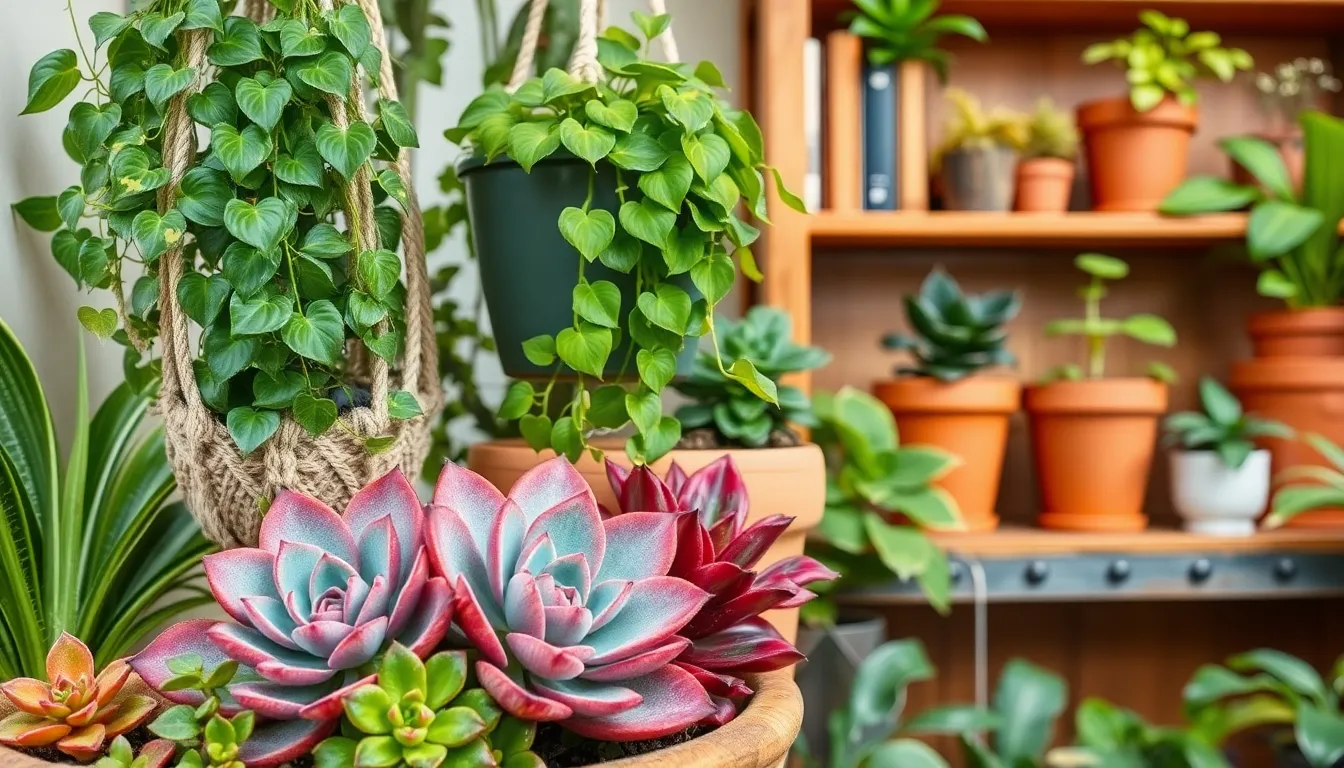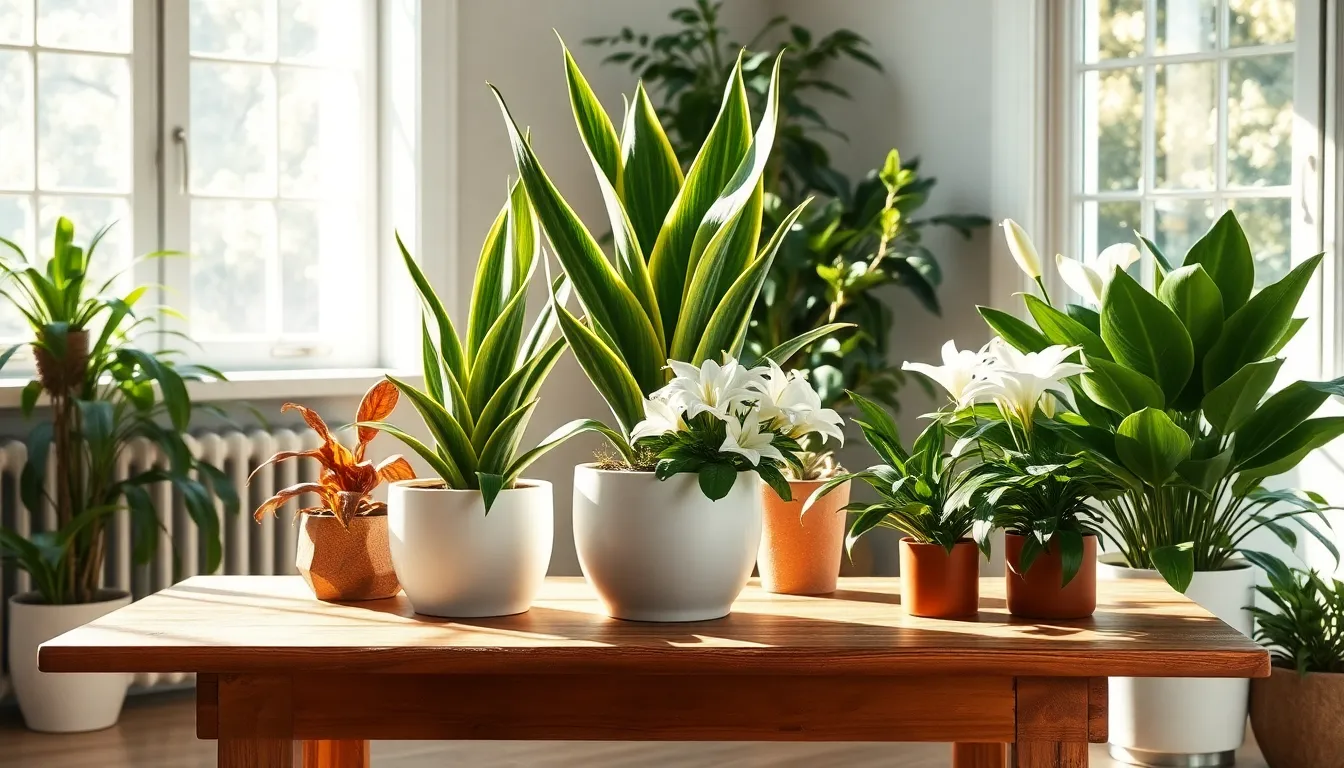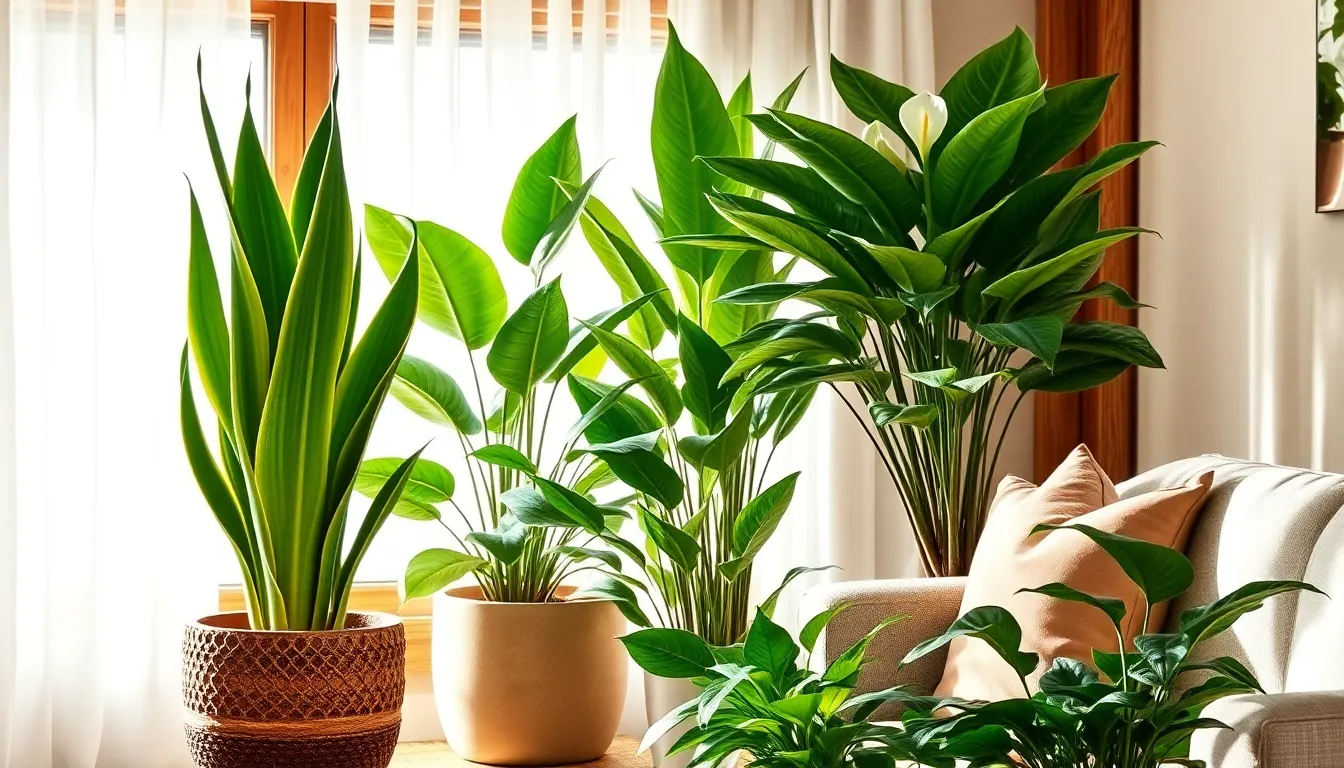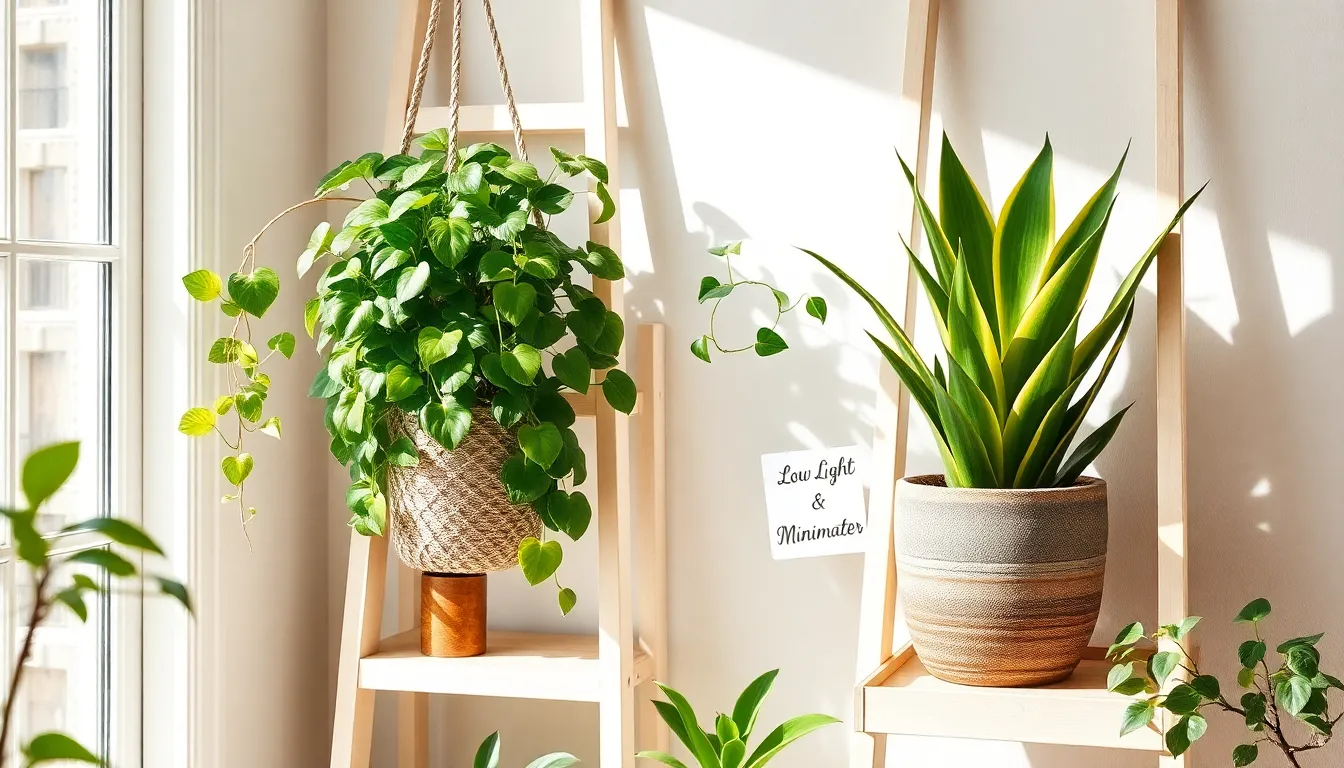Welcome to “Tips for Indoor Plant Maintenance,” where the art of nurturing life within your home becomes a joyful and rewarding experience! Whether you’re just beginning your green journey or have already cultivated a thriving indoor oasis, this guide is your go-to resource for transforming any room into a lush, vibrant sanctuary of well-tended plants.
In this guide, we’ve curated a list of indoor plants that are not only beautiful but also resilient, offering both beginners and seasoned gardeners the confidence to succeed. With each tip and trick, you’ll discover practical benefits that make plant care a breeze, ensuring that your leafy companions thrive and flourish, bringing fresh air and tranquility to your living space.
Imagine the satisfaction of watching your plants grow and thrive, knowing you’ve provided the perfect environment for their needs. By following our expert advice, you’ll unlock the secrets to successful indoor gardening, reaping the rewards of cleaner air, enhanced mood, and a profound connection to nature—all within the comfort of your own home.
Adjust Watering to Season Changes
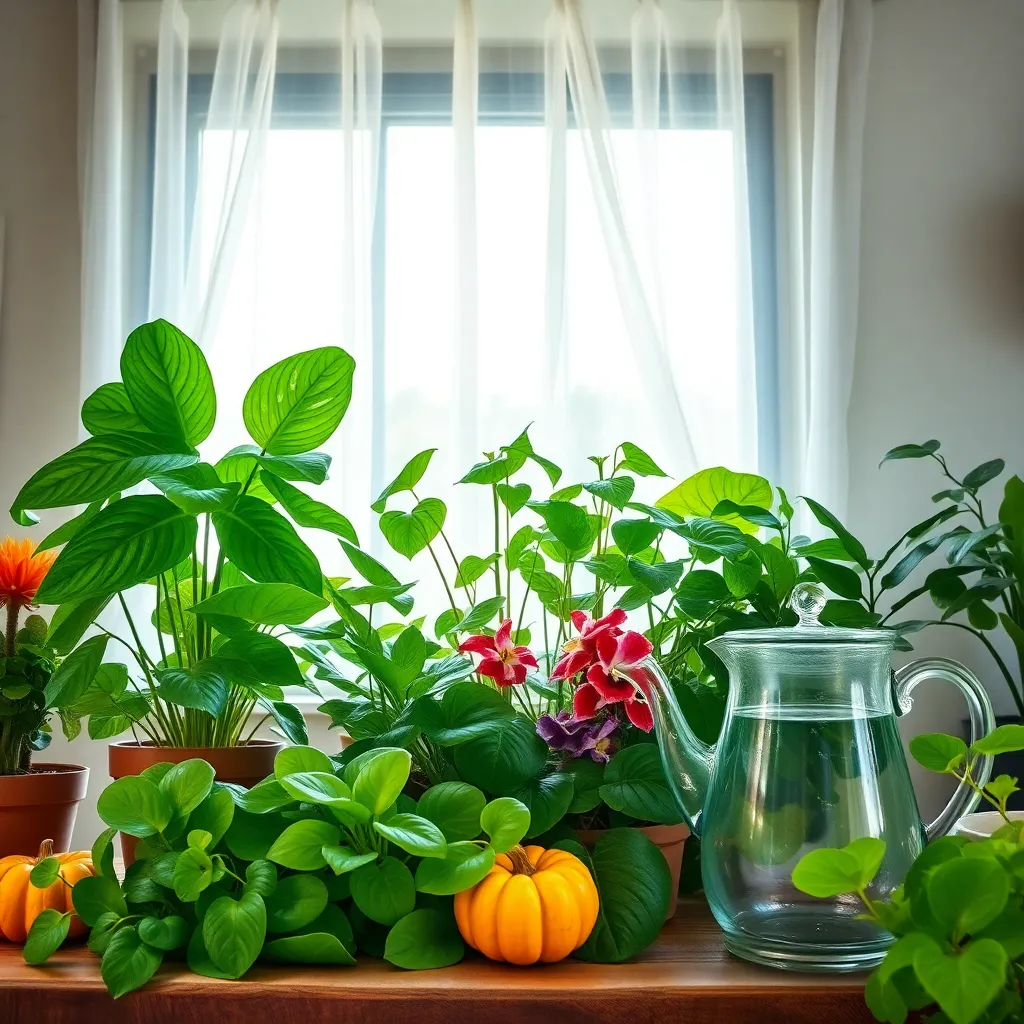
Understanding how to adjust watering for indoor plants as seasons change is crucial for maintaining their health. During the winter, many plants enter a state of dormancy, meaning their water needs decrease significantly.
It’s important to check the soil moisture before watering; insert your finger about an inch deep to feel if it’s dry. If the soil is still moist, wait a few more days before watering again, particularly during the cooler months.
In the spring and summer, plants typically require more water due to increased growth and higher temperatures. You may need to water your plants more frequently, but always ensure proper drainage to prevent root rot.
Consider the type of plant, as succulents and cacti have different needs compared to tropical plants like ferns. Tropical plants prefer consistent moisture, while succulents thrive with less frequent watering.
- For succulents, allow the soil to dry out completely between waterings.
- Tropical plants may require watering once the top inch of soil feels dry.
Remember that the size of the pot and the type of soil mix can also affect watering needs. Use a well-draining potting mix and ensure your pots have drainage holes to allow excess water to escape.
Rotate Plants for Even Growth
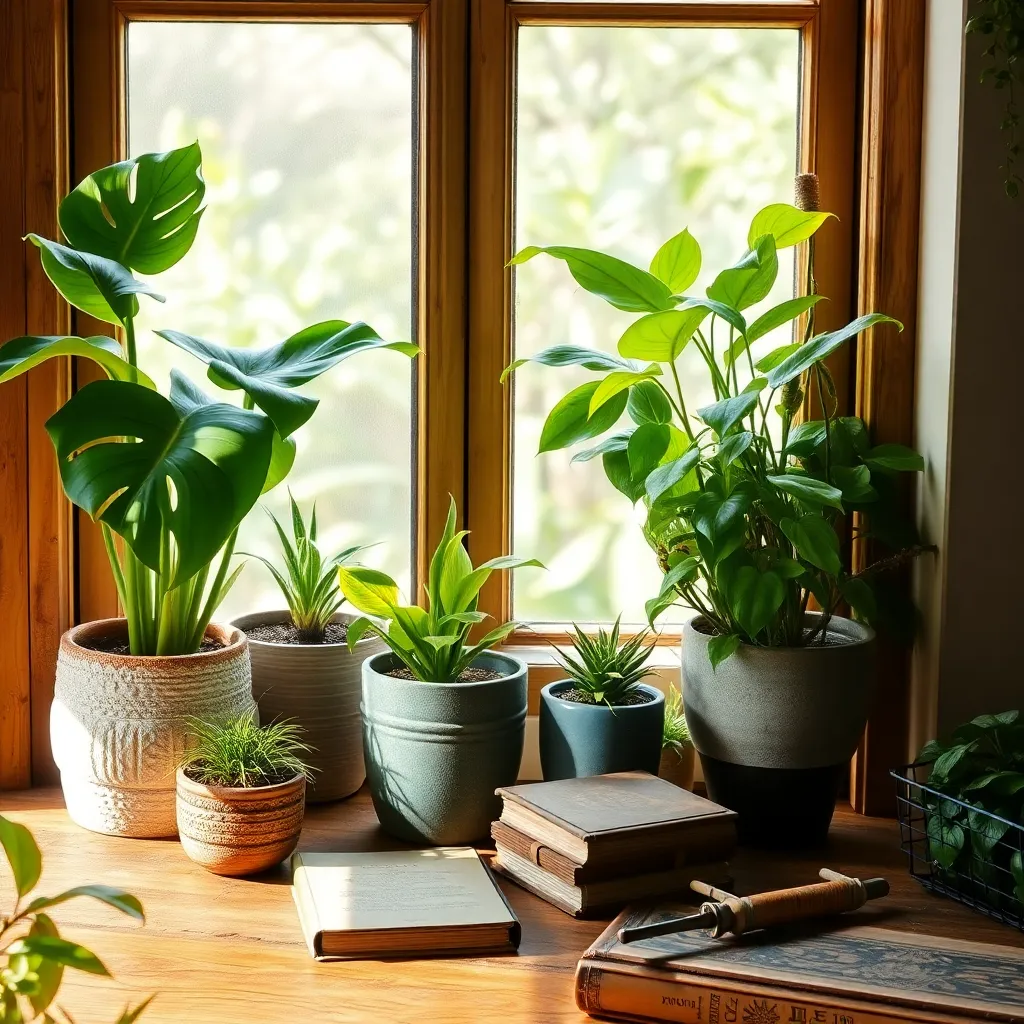
Rotating your indoor plants regularly can significantly contribute to their overall health and growth. By giving them a 90-degree turn every week, you ensure that all sides receive equal sunlight, promoting even growth and reducing the risk of a lopsided appearance.
Many indoor plants naturally lean towards the source of light, which can lead to uneven growth patterns. To counter this, place a reminder on your calendar or set an alarm to rotate your plants weekly. This simple practice helps maintain an aesthetically pleasing shape and supports robust growth.
For beginners, it’s important to understand that not all plants require the same amount of light. Assess your plant’s light requirements and position them accordingly, ensuring they receive adequate but not excessive exposure. For example, a Fiddle Leaf Fig thrives in bright indirect light, while a Snake Plant can tolerate lower light conditions.
Advanced gardeners can experiment with more precise rotation schedules based on the plant species and the season. Some plants may benefit from a rotation every two weeks during the growing season and less frequently in the dormant period. Observing your plants closely will help you determine the best rotation frequency for their specific needs.
Wipe Leaves to Remove Dust
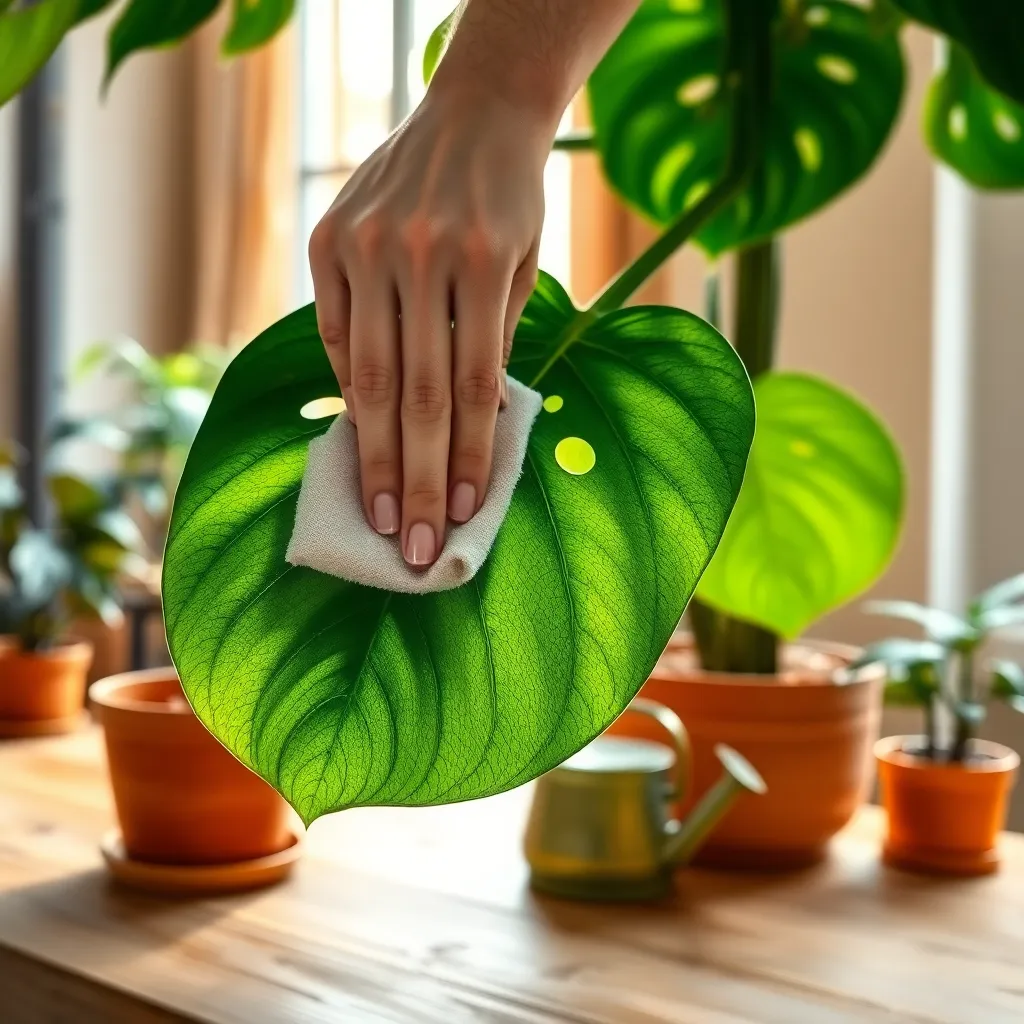
Regularly wiping the leaves of your indoor plants is essential for maintaining their health and appearance. Dust can accumulate on leaves, blocking sunlight and hindering photosynthesis, which is crucial for plant growth.
To clean the leaves, use a soft, damp cloth or sponge and gently wipe each leaf individually. Avoid using harsh chemicals or sprays that might damage the leaves or leave residues that are harmful to the plant.
For larger leaves, such as those on fiddle leaf figs or rubber plants, support the underside of the leaf with one hand while wiping with the other. This helps prevent damage to the leaf and ensures a thorough cleaning.
Smaller-leaved plants, like ferns or ivy, can benefit from a gentle shower in the sink or bathtub. Ensure the water is lukewarm and allow the leaves to air dry before returning the plant to its usual spot.
Beyond basic cleaning, consider using distilled water or rainwater, especially if your tap water is hard or contains chlorine. This can prevent unsightly water spots and further promote healthy foliage.
Check for Pests Regularly
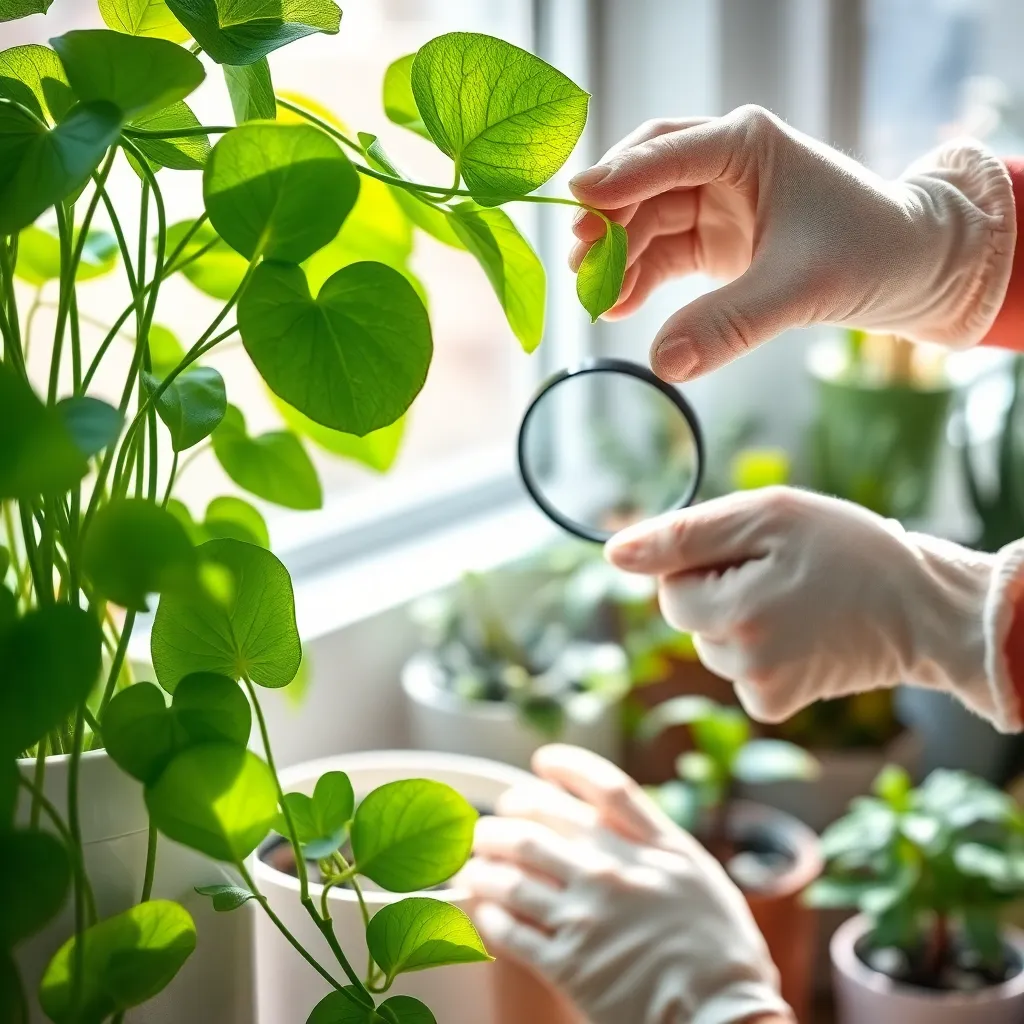
Regularly checking for pests is crucial to maintaining the health of your indoor plants. It’s essential to inspect your plants weekly, as early detection can prevent infestations from becoming severe.
Begin by examining the undersides of leaves, which are common hiding spots for many pests. Look for signs of damage such as yellowing leaves or small holes, which can indicate the presence of insects like spider mites or aphids.
To effectively manage pests, use a magnifying glass to inspect for tiny insects that are hard to see with the naked eye. If you find pests, consider using a gentle, homemade insecticidal soap by mixing one teaspoon of mild liquid soap with one liter of water.
For more persistent infestations, introducing natural predators like ladybugs can be an effective solution. However, for indoor environments, it may be more practical to use sticky traps or neem oil, which is safe and effective for a variety of pests.
Use Fertilizer Sparingly
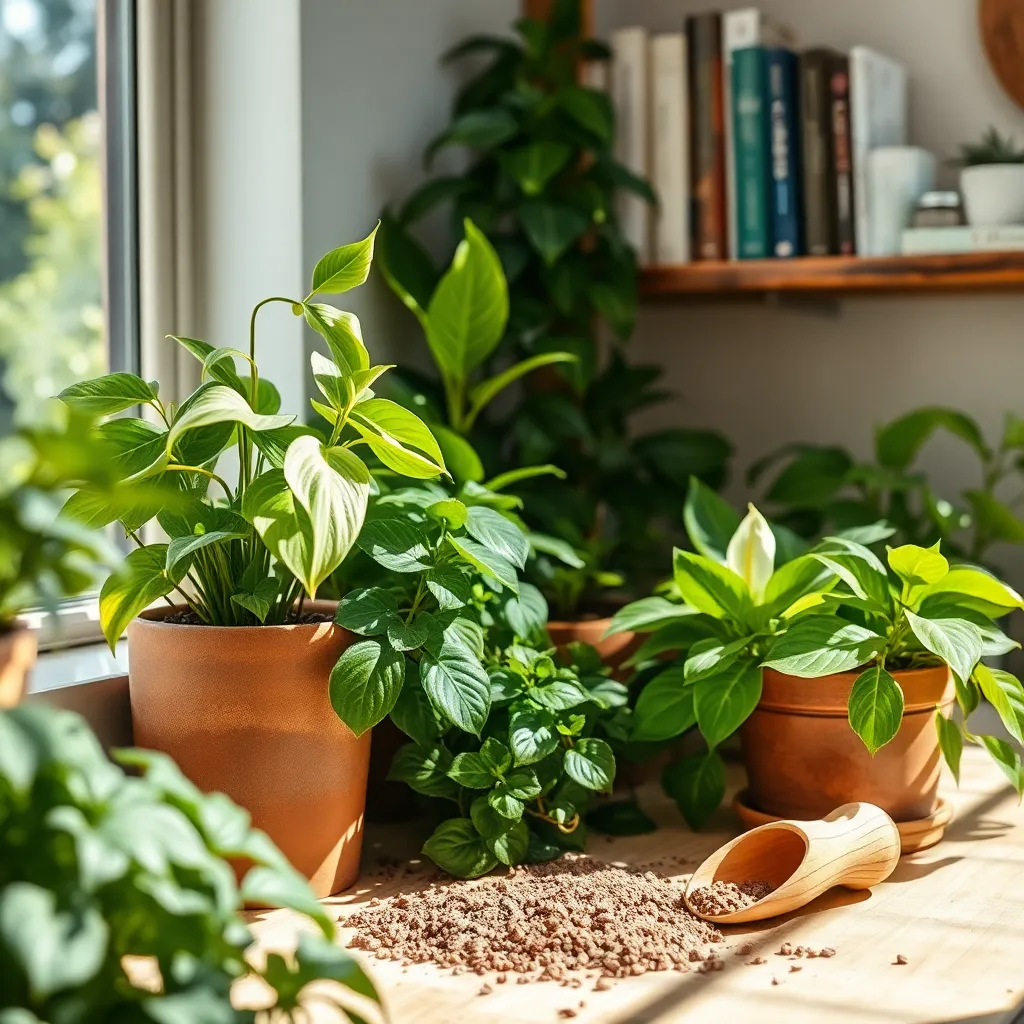
Using fertilizer sparingly is crucial for maintaining the health of your indoor plants. Over-fertilization can lead to salt buildup in the soil, which may damage roots and hinder plant growth.
It’s best to start with a diluted fertilizer solution to avoid overwhelming your plants. Choose a balanced, water-soluble fertilizer and mix it to half the recommended strength for indoor plant use.
For most indoor plants, fertilizing once a month during the growing season is adequate. During the dormant winter months, you can reduce or even skip fertilization since plant growth slows down significantly.
Observe your plants closely to adjust fertilization according to their specific needs. Yellowing leaves or stunted growth may indicate a need for nutrients, but always ensure it’s not a sign of over-fertilization first.
Conclusion: Growing Success with These Plants
As we’ve explored in this article, nurturing your indoor plants is much like tending to a thriving relationship. By prioritizing regular communication—through consistent watering schedules—and embracing adaptability with the changing seasons, you ensure your plants (and relationships) are resilient. Understanding individual needs fosters deeper connection, whether it’s through sunlight or shared experiences. Practicing patience and celebrating small victories nurture growth and encourage flourishing bonds. Lastly, knowing when to seek help, just like asking for gardening advice, strengthens your support system.
Your actionable next step is to choose one plant and practice these principles, observing how the care you give mirrors the love you invest in your relationships.
Remember, lasting relationships, like well-maintained plants, require ongoing care and attention. Bookmark this article now, so you can revisit these timeless tips whenever your green thumb—or heart—needs a refresher.
Looking forward, embrace the journey of growth and connection, knowing that with each thoughtful action, you’re cultivating a lush and loving life. Empower yourself with these insights, and watch both your plants and relationships blossom. Save this guide as your go-to resource, and step confidently into a more nurturing tomorrow.

